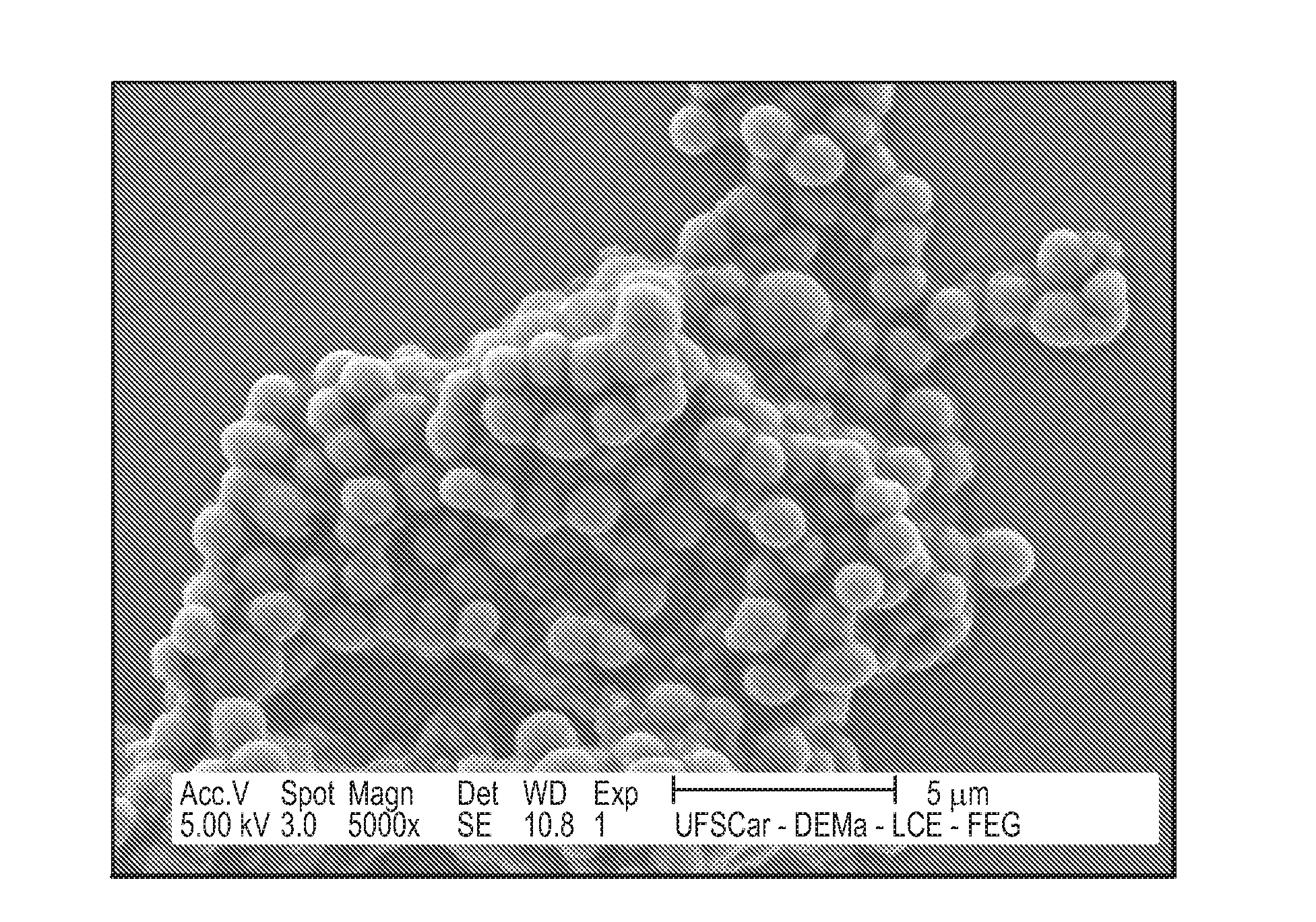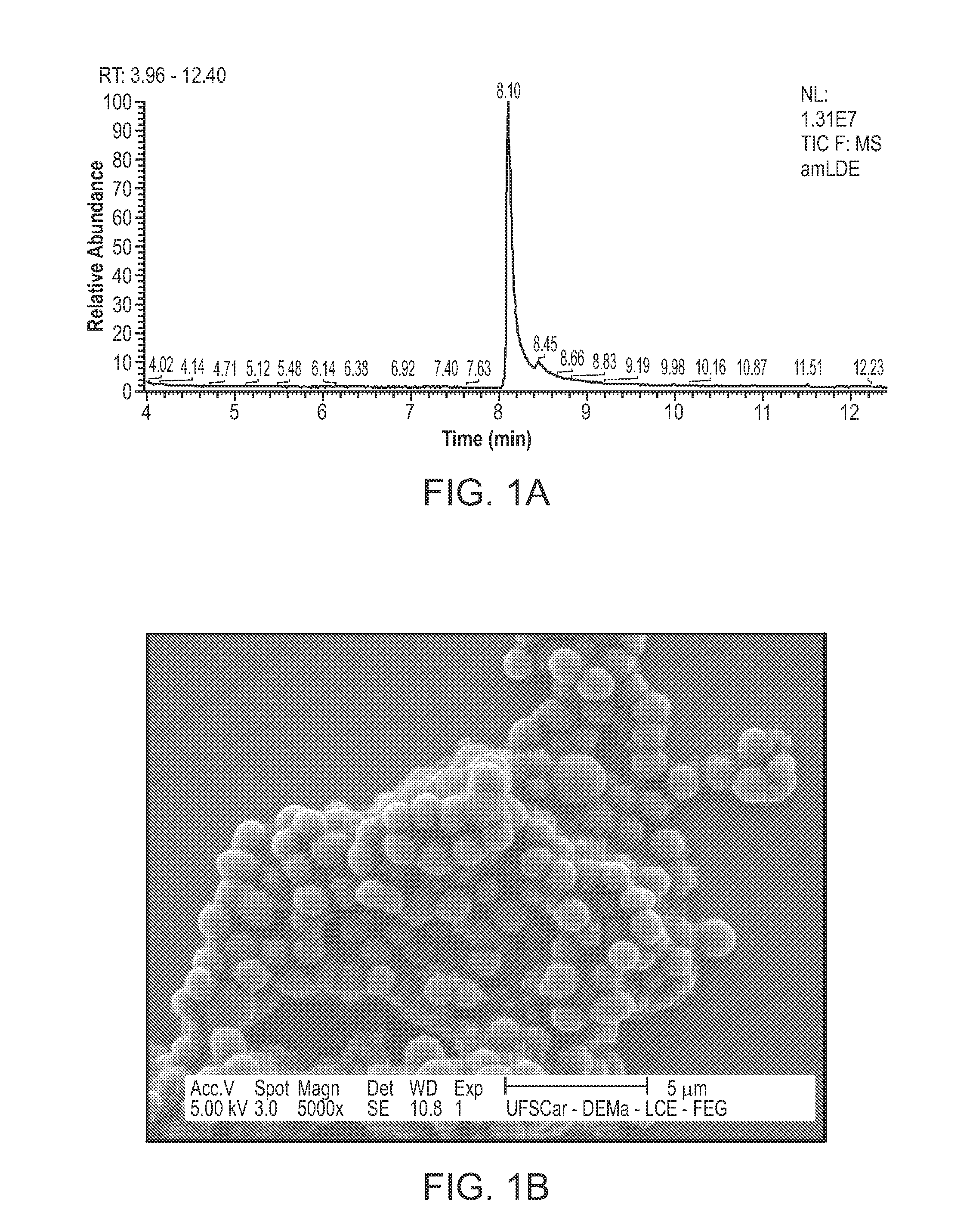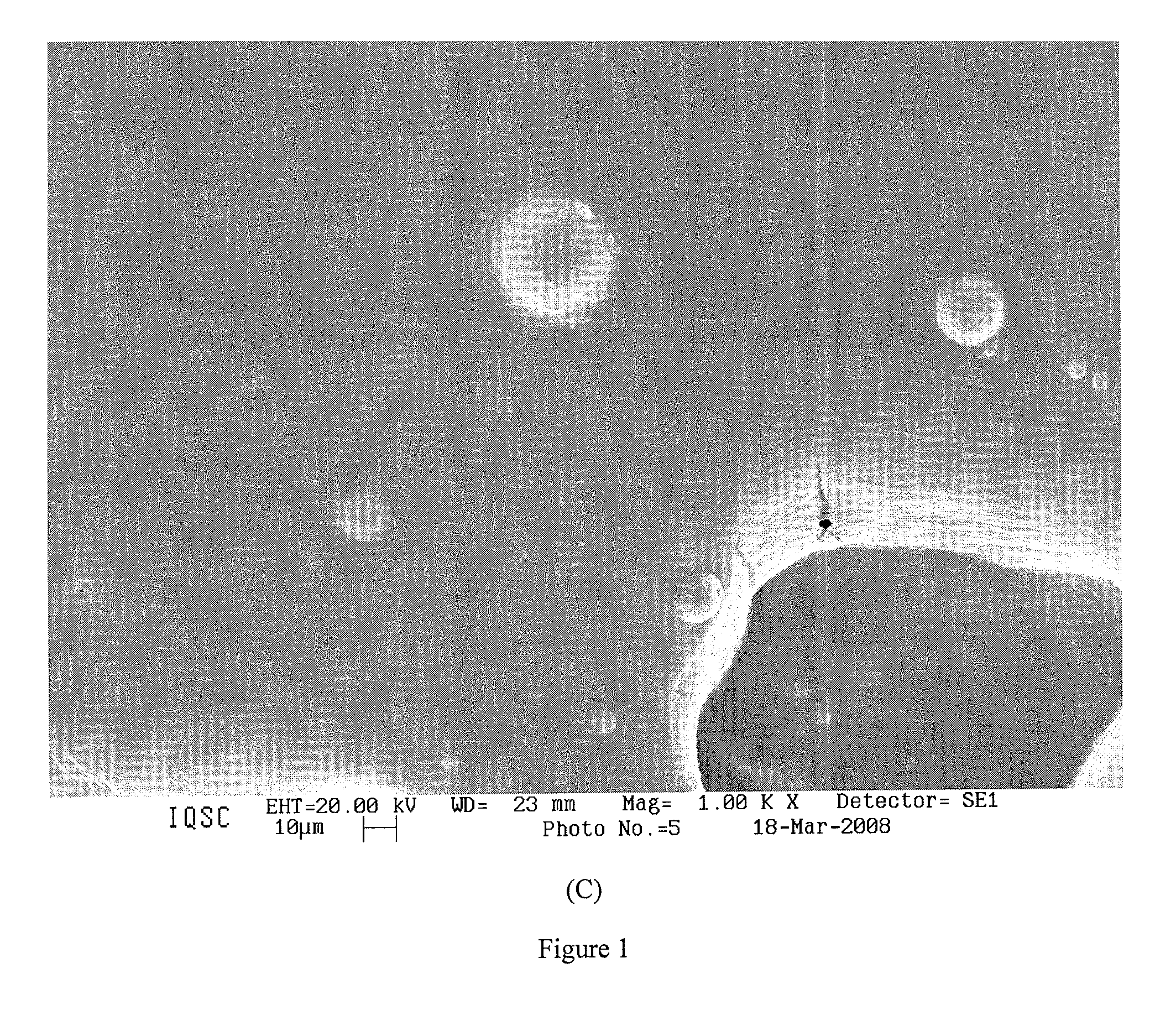Compositions of jasmonate compounds
a technology of jasmonate and compound, which is applied in the field of pharmaceutical compositions of jasmonate compounds, can solve the problems of making jasmonate compounds less attractive as anti-cancer agents, and achieve the effects of reducing the use of aggressive therapies, prolonging the effectiveness of sensitivity to hormone therapy, and little or no toxicity to healthy cells
- Summary
- Abstract
- Description
- Claims
- Application Information
AI Technical Summary
Benefits of technology
Problems solved by technology
Method used
Image
Examples
example 1
Synthesizing LDE-Carried MDJ
[0165]A lipid mixture consisting of 40 mg of phosphatidylcholine, 20 mg cholesterol oleate, 1 mg triolein, and 0.5 mg cholesterol was first vacuum dried for 16 h at 4° C. An emulsion of the lipids was then prepared in Tris-HCl 0.01 M, pH 8.0 by ultrasonic irradiation, using a Branson equipment, model 450A (Ultrasound Arruda, Sao Paulo, Brazil) 125 watts power for 3 hours, under a nitrogen atmosphere, with temperatures ranging between 51 to 55° C. To obtain the LDE in the diameter range or size range desired for encapsulating MDJ, the emulsion was purified in two steps of centrifugation (e.g., ultracentrifuge, Beckman rotor SW-41). In the first step, the fraction of the upper tube, resulting from centrifugation at 200,000 g for 30 min at 4° C., was removed by aspiration (1 mL) and discarded. Into the remaining suspension was then added potassium bromide (KBr) to adjust the density to 1.21 g / mL. After the second centrifugation (200,000×g for 2 hours at 4° C...
example 2
Synthesizing Soy Phosphatidylcholine Liposome-Carried MDJ and Polymer-Carried MDJ
[0167]Liposome-Carried MDJ
[0168]Into a transparent bottle with a lid, adequate amounts of nonionic surfactant castor oil polyoxyethylene-40-Hydrogenated (ORPH) (EUMULGIN® HRE 40) and soy phosphatidylcholine (FS) (Epikuron® 200) with a molar ratio of 1:1 ORPH / FS were added. Sodium oleate and cholesterol were then added with a molar ratio of 1:1 based on a molar ratio of 1:5 sodium oleate / ORPH. The resulting mixture was filtered through a 0.22 μm membrane. The filtered solution was added into a sterile bottle, then MDJ (96%, purchased from Sigma-Aldrich) was added to reach a concentration of 10 mg per 1 mL of the resulting nanoemulsion (this amount could vary from 7 mg to 21 mg of MDJ per 1 mL of the nanoemulsion). The homogenized nanoemulsion was generated via vortex agitation alternating with a resting period. In particular, the mixture in the sterile bottle was sonicated by using Sonic® Ultrasonic Liqu...
example 3
Synthesizing Cyclodextrin-Carried MDJ
[0178]MDJ-cyclodextrin nanoemulsion was prepared by mixing an aqueous or alcohol solution of methyl dihydro jasmonate (1×10−3 Molar to 1×10−2 Molar) with a cyclodextrin solution with equivalent amount of cyclodextrin. The resulting mixture was stirred until a homogenous emulsion was obtained.
PUM
| Property | Measurement | Unit |
|---|---|---|
| size | aaaaa | aaaaa |
| size | aaaaa | aaaaa |
| size | aaaaa | aaaaa |
Abstract
Description
Claims
Application Information
 Login to View More
Login to View More - R&D
- Intellectual Property
- Life Sciences
- Materials
- Tech Scout
- Unparalleled Data Quality
- Higher Quality Content
- 60% Fewer Hallucinations
Browse by: Latest US Patents, China's latest patents, Technical Efficacy Thesaurus, Application Domain, Technology Topic, Popular Technical Reports.
© 2025 PatSnap. All rights reserved.Legal|Privacy policy|Modern Slavery Act Transparency Statement|Sitemap|About US| Contact US: help@patsnap.com



